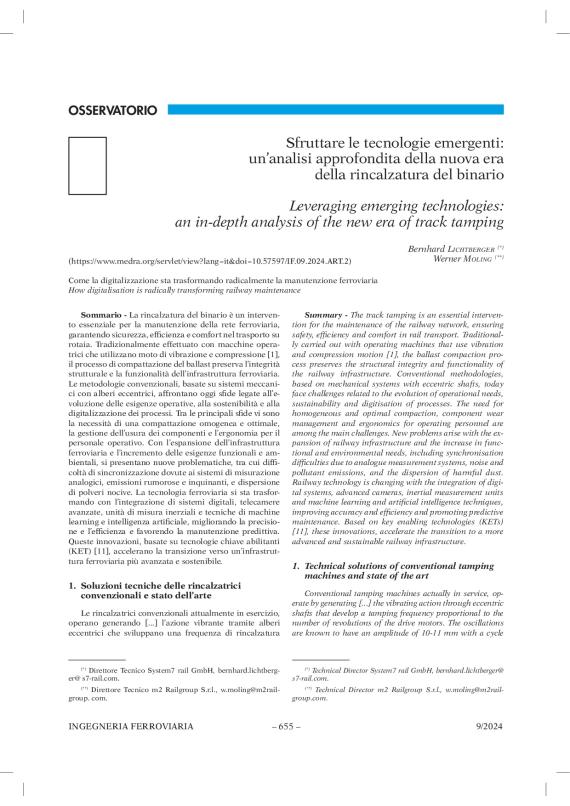
Summary - The track tamping is an essential intervention for the maintenance of the railway network, ensuring safety, efficiency and comfort in rail transport. Traditionally carried out with operating machines that use vibration and compression motion [1], the ballast compaction process preserves the structural integrity and functionality of the railway infrastructure. Conventional methodologies, based on mechanical systems with eccentric shafts, today face challenges related to the evolution of operational needs, sustainability and digitisation of processes. The need for homogeneous and optimal compaction, component wear management and ergonomics for operating personnel are among the main challenges. New problems arise with the expansion of railway infrastructure and the increase in functional and environmental needs, including synchronisation difficulties due to analogue measurement systems, noise and pollutant emissions, and the dispersion of harmful dust. Railway technology is changing with the integration of digital systems, advanced cameras, inertial measurement units and machine learning and artificial intelligence techniques, improving accuracy and efficiency and promoting predictive maintenance. Based on key enabling technologies (KETs) [11], these innovations, accelerate the transition to a more advanced and sustainable railway infrastructure.
https://www.medra.org/servlet/view?lang=it&doi=10.57597/IF.09.2024.ART.2
- Settembre


